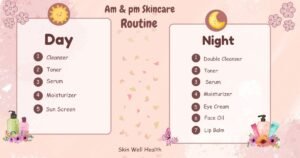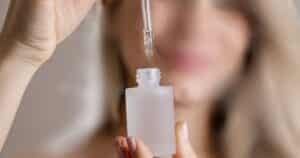A Game-changer In 2024 – LED Light Therapy for Rosacea
Rosacea. It’s so upsetting when your skin gets red, burns, and has those irritating bumps. But don’t worry, fighters for calm skin! In the fight against rosacea, LED light therapy has shown much promise. But does it really work?
In this blog post, we will uncover the effectiveness of LED light therapy for rosacea, which is the best for rosacea, blue and red light therapy, and their uses at home and in clinics.
What is Rosacea?
Rosacea is a chronic inflammatory skin disease that mostly affects the center of the face and is often confused with just chronic redness. According to the National Rosacea Society, rosacea affects around 16 million Americans as well as 415 million people worldwide.
It believes that it can be caused by:
Genetics such as a family history of rosacea can increase your risk.
Immune system such as abnormal immune system activity, may play a role.
Vascular system problems such as problems with blood vessels in the face could be involved.
Some factors can worsen the symptoms of rosacea, such as sun exposure, spicy foods, hot drinks, alcohol, stress, and some medicines.
Does LED light therapy for Rosacea work?
LED light therapy, which is also called light-emitting diode therapy, is an effective way to treat rosacea and other skin disorders by using specific wavelengths of light.
LED light therapy is a safe and non-invasive way to treat rosacea that is different from other treatments. Because it doesn’t use harsh chemicals or needles, most people with rosacea are able to use it.
LED light therapy has anti-inflammatory properties that can help reduce inflammation, calm the skin, reduce the redness and swelling associated with rosacea flare-ups, boost collagen production, and speed up the healing of wounds.
There are two ways that LED light therapy can help with these issues:
- Red light therapy
- Blue light therapy
Red or blue light for rosacea — Which is better?
Both red and blue light therapy have been shown to be effective in treating rosacea, but they target different points of the condition:
Red light therapy
Targets — Inflammation and redness
How it works — Red light waves are believed to reach deeper into the skin, providing cellular recovery and decreasing inflammation. This can result in reduced redness and calmer skin overall. It also speeds up the healing process, which might minimize the appearance of bumps.
Blue light therapy
Targets — Bacteria (P. acnes)
How it works — Blue light therapy can be beneficial if you have papules (small, red bumps) or pustules (bumps filled with pus) on your face because of rosacea. It targets and removes P. acnes bacteria, which can make these breakouts worse.
Because red light therapy reaches deeper into the skin, which is important for reducing inflammation, boosting healing, and increasing cell energy as needed, it is better than blue light therapy, as far as we have studied and experienced. But remember, this is not a cure — just a way to reduce rosacea symptoms.
But dear guys stop here…. there is another good news. In some cases, combining red and blue light therapy may be even more effective than using them alone. This is because it treats both the bacterial and inflammatory areas of rosacea.
Here are two case studies that suggest combining red and blue light therapy might be even more effective than using them alone.
Case report 1
Patient:
- A 22-year-old Caucasian woman
- She has a 5-year history of pink eruptions on her nose.
- Reported a burning sensation.
Diagnosis:
- The patient has a moderate grade papulopustular rosacea subtype, according to the NRS classification.
Treatment history:
- The patient received two cycles of oral tetracycline (Lymecycline) at a dose of 300mg daily for 12 weeks (the previous two years).
- Metronidazole cream 1% for 6-month cycles (used concurrently with tetracycline).
- 40% pyruvic acid peeling every 25 days for the past 6 months (limited response and frequent relapses).
A new treatment plan:
The following is an ordered and combined LED light therapy treatment.
- Blue light (480 nm ± 15 nm, 300 J/minute)
- Red light (650 nm ± 15 nm, 100 J/minute)
Treatment schedule:
- Twice a week for a total of 10 sessions.
- 15 minutes per wavelength of light (30 minutes total treatment time).
Device:
- Quasi-monochromatic 120 LED system (Dermodinamica® instrument, ELISOR Srl, Milan, Italy).
Case report 2
Patient:
- 68-year-old Caucasian man
- 7-year history of moderate grade papulopustular rosacea involving the entire face
- Experienced yearly relapses for the past 6-7 years
Treatment history:
- Oral tetracycline (Lymecycline) 300mg daily (2 cycles)
- Azithromycin every 2 weeks (unspecified duration)
- Topical metronidazole cream 0.75% (unspecified duration)
- Limited response and recurring flare-ups
A new treatment plan:
The following is an ordered and combined LED light therapy treatment.
- Blue light (480 nm ± 15 nm, 300 J/minute)
- Red light (650 nm ± 15 nm, 300 J/minute)
Treatment schedule:
- Twice weekly for 10 sessions (15 minutes per wavelength, total 30 minutes per session)
- Dermodinamica® LED system (ELISOR Srl, Milan, Italy)
- Topical 15% azelaic acid (ongoing)
Outcome and follow-up
The case study reports positive outcomes for both the 22-year-old woman and the 68-year-old man after undergoing LED light therapy for their papulopustular rosacea. Both patients reported a significant reduction in burning and itching sensations after the LED therapy regimen. The number of papules (small, red bumps) lessened throughout the LED therapy sessions [1].
A noticeable decrease in facial redness (erythema) was observed by the dermatologist after five sessions, with further improvement by the end of the ten-session treatment [1].
Papulopustular rosacea on the nose of case report 1 at the base time (a), after five sessions (b), and after ten sessions (c) with coupled blue (480 nm) and red (650 nm) light-emitting diodes therapy [1]
Papulopustular rosacea with erythema and telangiectasias on the glabella, forehead, nose, cheeks, and chin of case report 2 at the base time (a), after five sessions (b), and after ten sessions (c) with coupled blue (480 nm) and red (650 nm) light-emitting diodes therapy [1]
So both case studies suggest that combining red and blue light therapy might be even more effective than using them alone.
At-Home vs. In-Clinic Treatment: Which is better for Rosacea?
There are pros and cons to both at-home LED light therapy and In-clinic LED light therapy.
At-home LED light therapy
Pros:
- Use it comfortably at home, at your own speed, and on your own schedule.
- In general, at-home devices are cheaper and more affordable than therapies received in a clinic.
- You can choose features and prices from a wide range of options.
Cons:
- Typically, at-home gadgets have a lower light intensity than professional-grade devices used in clinics. This may make results slower.
- To see results for weeks, consistent daily or several times per week use is necessary.
- If you see a dermatologist at home, they might not be able to guide and monitor you as effectively as they would in a clinic.
In-clinic LED light therapy
Pros:
- If you want faster results, professional-grade devices can provide you with a more powerful dose of light.
- A dermatologist is qualified to examine your rosacea, suggest the right wavelength (red, blue, or combined), and check your improvement.
- Certain LED treatments are available at certain clinics to address specific rosacea symptoms.
Cons:
- In-clinic treatments are usually more expensive than devices that you can use at home.
- Your daily routine may be disrupted because regular appointments are necessary.
- Dermatologists and clinics that provide LED therapy are not easily reachable for everyone.
Extra things to remember:
Rosacea severity — Home devices can be a good place to start for people with mild rosacea. In serious cases, in-clinic treatments may be more effective.
Budget — If you choose in-clinic therapy, keep in mind the starting price of at-home devices, as well as ongoing therapy costs.
Lifestyle — If you have a schedule, a treatment plan that you can do at home might be more agreeable.
The Takeaway: Talk to Your Dermatologist
Before you start LED light therapy, you should definitely talk to your dermatologist. They can tell you what type of rosacea you have, suggest the best therapy (red, blue, or combination), and advise the duration and how regularly to use the treatment.
Share your experiences or ask questions in the comments below! We will be happy to hear your response and help you as much as we can.













